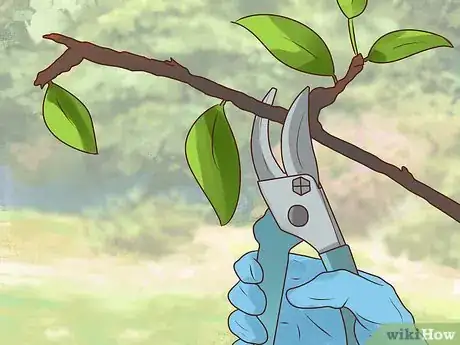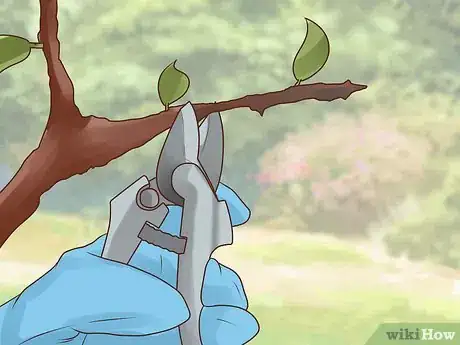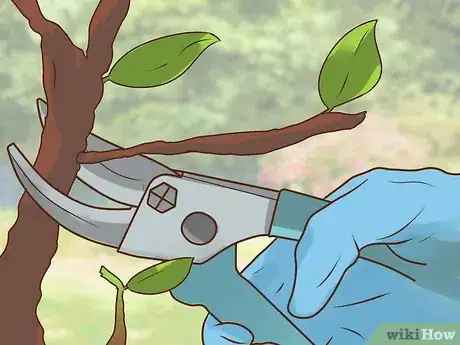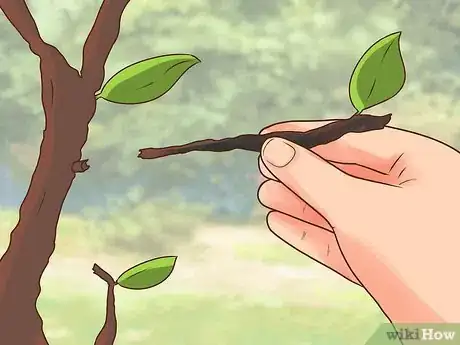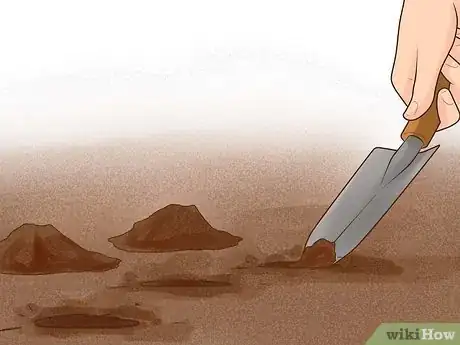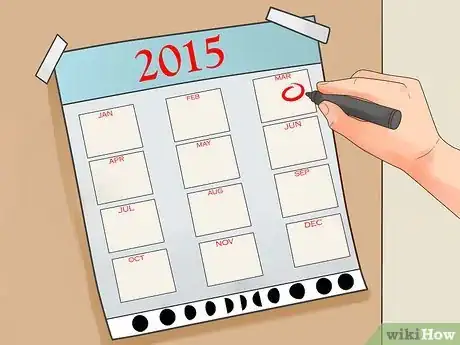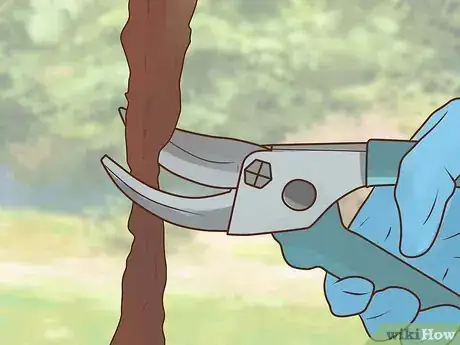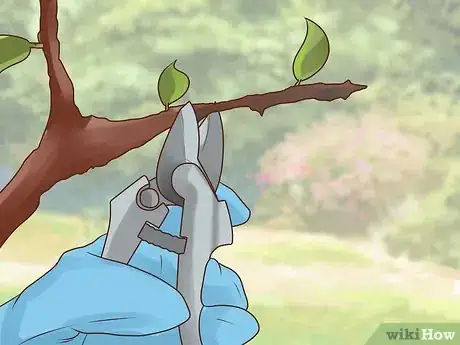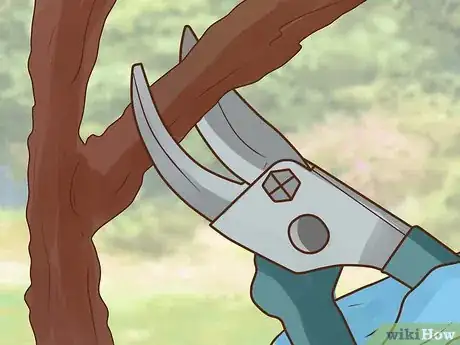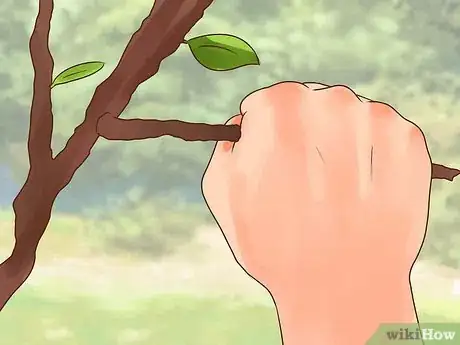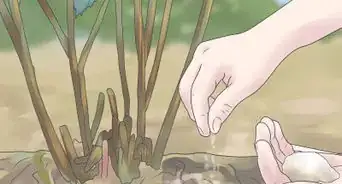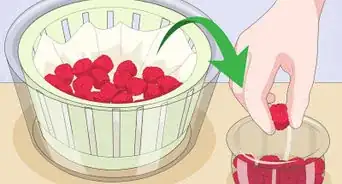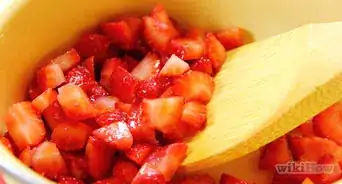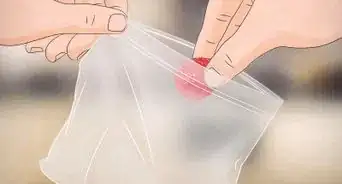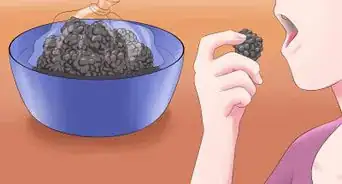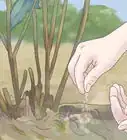wikiHow is a “wiki,” similar to Wikipedia, which means that many of our articles are co-written by multiple authors. To create this article, volunteer authors worked to edit and improve it over time.
wikiHow marks an article as reader-approved once it receives enough positive feedback. In this case, 93% of readers who voted found the article helpful, earning it our reader-approved status.
This article has been viewed 45,230 times.
Learn more...
Blackberries are perennial plants with root systems that last from year to year, but the plant's stems, formally called “canes”, are biennial, only lasting two years before being replaced by fresh growth. When pruning your blackberries, you'll need to treat first-year canes, called "primocanes," differently than second-year canes, called "floricanes." Light pruning should be done in the summer, but heavy pruning should wait until the dormant season.
Steps
Initial Pruning
-
1Prune part of the stem. When planting a blackberry vine as a rooted cutting, prune off two-thirds to three-fourths of the handle or stem, leaving only a short crown behind. Doing so stimulates the buds at the crown of the cutting, encouraging them to grow more vigorously.[1]
- The "crown" of the cutting refers to the portion of the cutting that extends just above ground once the cutting is planted.
- Cutting off most of the stem also removes any potentially damaged or diseased tissue that may have been on the stem.
- Do this pruning after you have already planted the cutting in the ground.
- If you are planting a seedling, bush, or vine with well-established erect canes, do not prune them back.
-
2Cut back the canes during the first winter. First year growth is usually poor, so late during the first winter, you should cut back the canes back until they are roughly 3 to 4 inches (7.6 to 10 cm) high. This encourages the plant to develop sturdier canes that can support more fruit.
- If you are satisfied with your first year growth, however, pruning back the canes so dramatically may not be necessary. Blackberries producing satisfactory growth in their first year can be pruned according to standard annual requirements.
Annual Summer Pruning
-
1Remove floricanes after the harvest. As soon as you harvest the berries from one floricanes, you should remove the entire cane from the plant by cutting it off at its base, near the main stem of the plant.
- Floricanes are usually second-year canes and are the canes responsible for producing the majority of the plant's fruit. They are spent after producing fruit, which is why you should remove them.
- Only remove the canes that bore fruit that year. You should be able to see visible fruit stalks on the canes even after the berries have been removed.
-
2Head the primocanes. Once each primocane has exceeded its desired height by roughly 4 inches (10 cm), you should it back down to its desired height.
- Primocanes are new or "first year" canes. They usually start as green shoots but should mature by fall, changing into woody brown canes.
- Primocanes of vigorous, erect blackberries should be headed down so that they are 48 to 60 inches (122 to 152 cm) above ground. Less vigorous erect blackberries should be headed to a height between 36 and 48 inches (91 and 122 cm), and semi-erect blackberries should be headed down until they are roughly 4 to 6 inches (10 to 15 cm) above the top trellis wire.
- Heading causes the cane to stiffen. Once a cane stiffens, it will be able to support the weight of fruit and foliage better, making it less likely to break.
- Heading also encourages lateral buds in the primocanes to develop into lateral branches. The lateral branches are also the plant's fruiting branches. As such, the plant can produce more fruit when it has more lateral branches.
-
3Make space. You should periodically clean out canes if the plant gets too crowded. Doing so increases the amount of light received by the plant and the airflow between plants. As a result, the blackberries grow better and are less prone to disease.
- If there are multiple blackberry plants in a row, maintain a row width of 18 to 24 inches (45 to 60 cm) at the base of the rows by cutting back low base canes once they threaten to crowd each other out.
- Remove weak primocanes when you cut off dying floricanes after your floricane harvest. During active growth, primocanes are considered weak when they exhibit poor foliage growth, appear damaged, or show signs of disease.
-
4Trim root suckers. You can allow root suckers to develop into rows up to 12 inches (30 cm) wide. Once they grow beyond this point, though, you should trim them back down to a width of 12 inches (30 cm) or less.
- Root suckers grow out of the crown or base of the plant. They aren't very practical since they do not develop fruit, and once they grow too long, they start stealing too much crucial energy from the rest of the plant.
Annual Winter/Spring Pruning
-
1Wait until late winter. Heavy dormant pruning should be performed once the plants are well into dormancy and just before they return to a state of active growth.
- Late winter and early spring are best. Harsh winters can injure the tips of canes and laterals. You should wait until most of the winter passes so that you can take care of these damages spots while doing the rest of your pruning.
- Doing the majority of your heavy pruning during the dormant season decreases the occurrence of wounds that can invite diseases like cane blight.
-
2Prune back all the primocanes. Shorten all of the primocanes on your plant by about one-third their current height.[2]
- By cutting back the canes, you encourage lateral fruiting shoots on the lower portion of these canes to branch out in the spring. As a result, the plant spends less energy on growing outward and more energy on its fruit producing branches.
-
3Thin out the lower primocanes. For upright blackberries, thin out the new primocanes produced from root buds and crown buds so that there are only six or eight canes per linear foot (30 cm) of row.
- If you are working with a type of blackberry plant that does not produce root buds and only produces crown buds, simply remove weak canes measuring less than 1/2 inch (1.25 cm) in diameter at the base. Then, thin out the remaining new primocanes until there are only five or six per hill.
-
4Cut back lateral branches. Most lateral branches should be trimmed back to a length of 12 to 18 inches (30 to 45 cm). Cutting these branches back will encourage larger fruit to form since you are essentially forcing the plant to spend its energy in a more concentrated space.
- Leave the lateral canes a bit longer on vigorous canes and a bit shorter on slower canes.
- If you notice winter damage on a lateral cane, cut it back far enough to remove this damage, even if doing so will shorten the branch more than usual.
- Completely remove lateral branches from the lowest 18 inches (45 cm) on vigorous canes and lateral branches from the lowest 12 inches (30 cm) on weaker canes. Doing so improves air circulation, thereby minimizing the risk of disease and making harvest easier later on.
-
5Remove damaged canes and dead canes. Any weak or damaged canes that have not already been removed by this point should be pruned, as well.[3]
- Weak canes include any cane with a diameter less than 1/2 inch (1.25 cm) at its base.
- Canes that rub or intertwine with one another should also be removed.
- Damaged canes, diseased canes, or dead canes should be cut off, as well, to prevent the possible spread of disease or insects.
Community Q&A
-
QuestionWhat do I do with the big stems that have shot up?
 Community AnswerCut a little of the tip off the top of it daily. It won't kill the plant.
Community AnswerCut a little of the tip off the top of it daily. It won't kill the plant.
Warnings
- Discard spent floricanes and weak or damaged wood that you remove from the blackberry plant. If you allow the wood to remain by the active plant, it could invite disease and pests as it decays, and those problems could infect your healthy plant.⧼thumbs_response⧽
- Make sure that the pruning tools you use are clean, especially if they have previously come into contact with diseased or dead wood.⧼thumbs_response⧽
Things You'll Need
- Pruning shears
